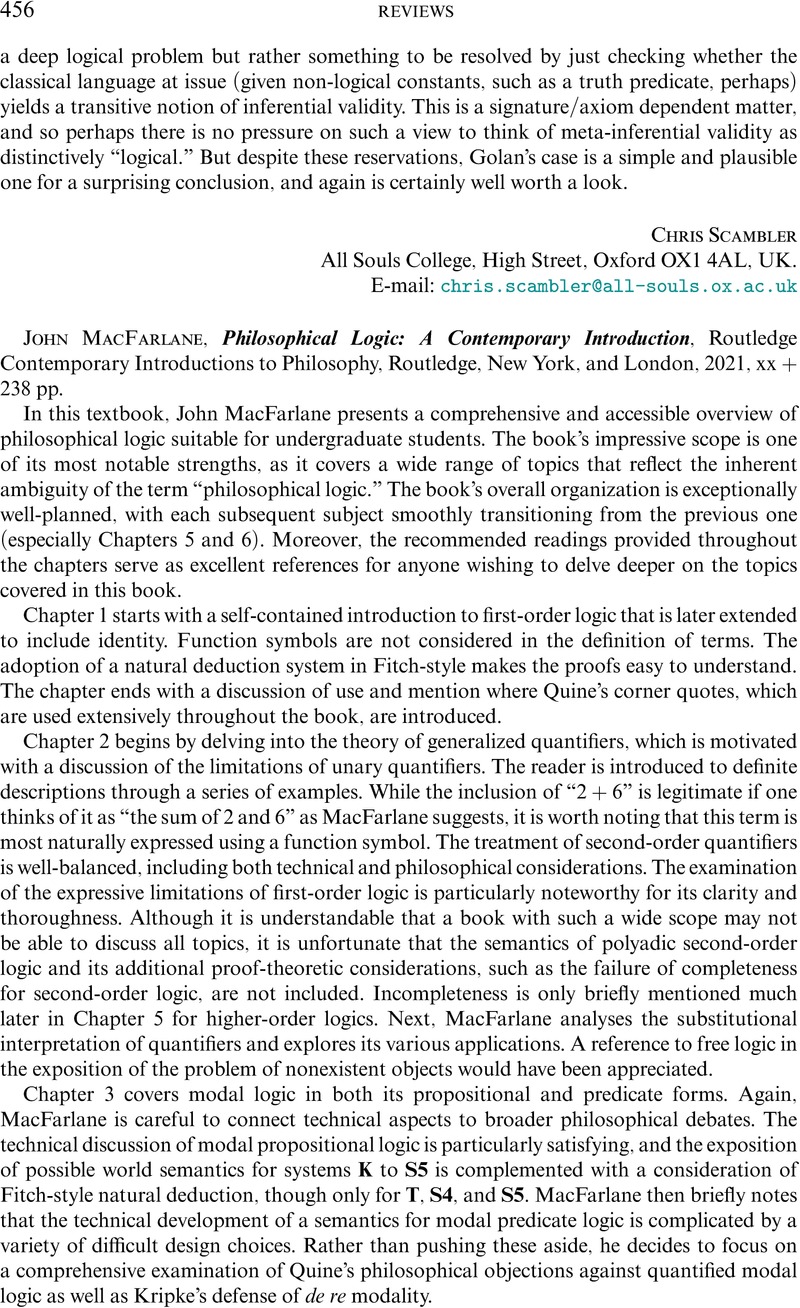No CrossRef data available.
Article contents
John MacFarlane, Philosophical Logic: A Contemporary Introduction, Routledge Contemporary Introductions to Philosophy, Routledge, New York, and London, 2021, xx + 238 pp.
Review products
John MacFarlane, Philosophical Logic: A Contemporary Introduction, Routledge Contemporary Introductions to Philosophy, Routledge, New York, and London, 2021, xx + 238 pp.
Published online by Cambridge University Press: 12 October 2023
Abstract
An abstract is not available for this content so a preview has been provided. Please use the Get access link above for information on how to access this content.

- Type
- Review
- Information
- Copyright
- © The Author(s), 2023. Published by Cambridge University Press on behalf of The Association for Symbolic Logic



